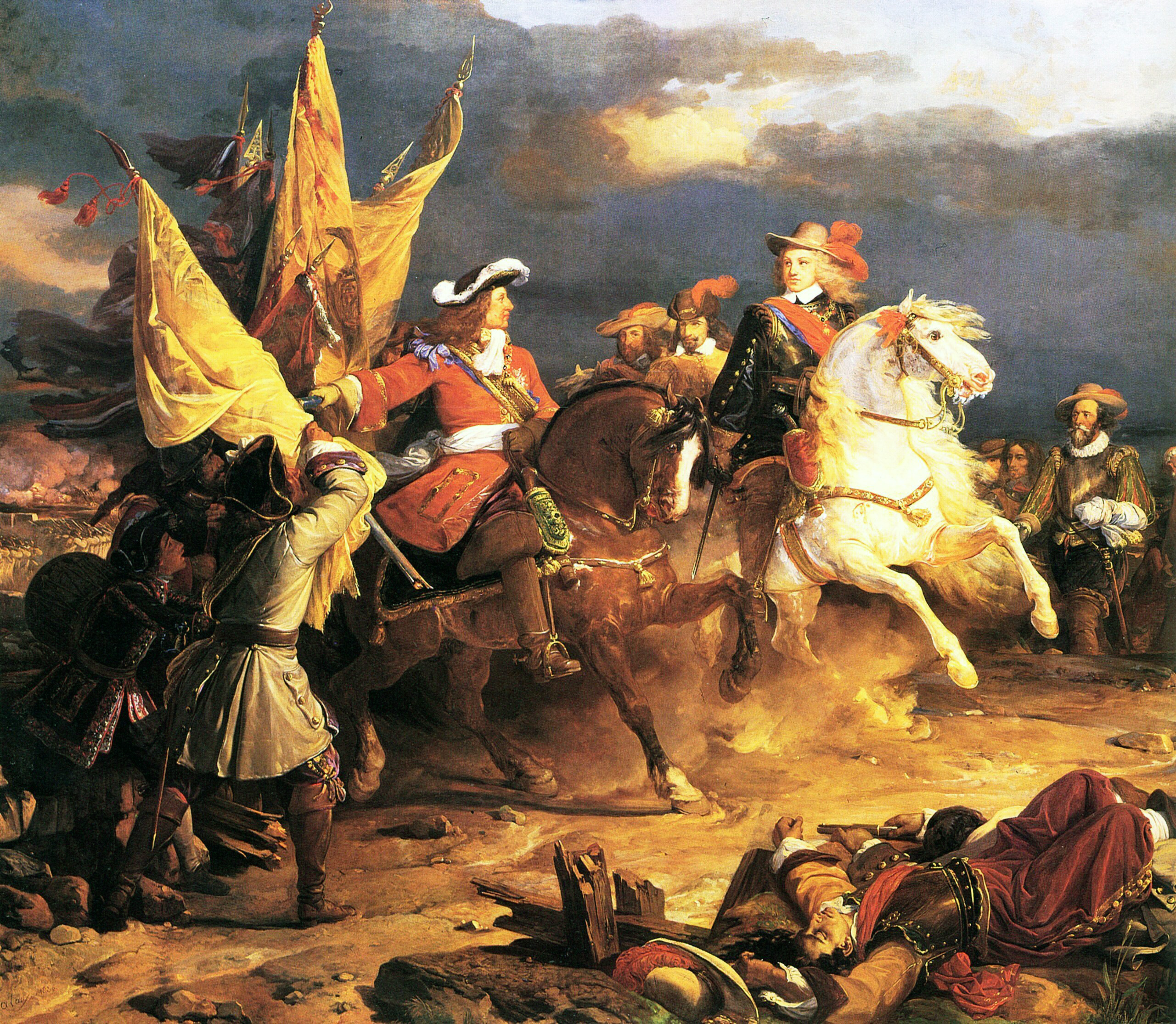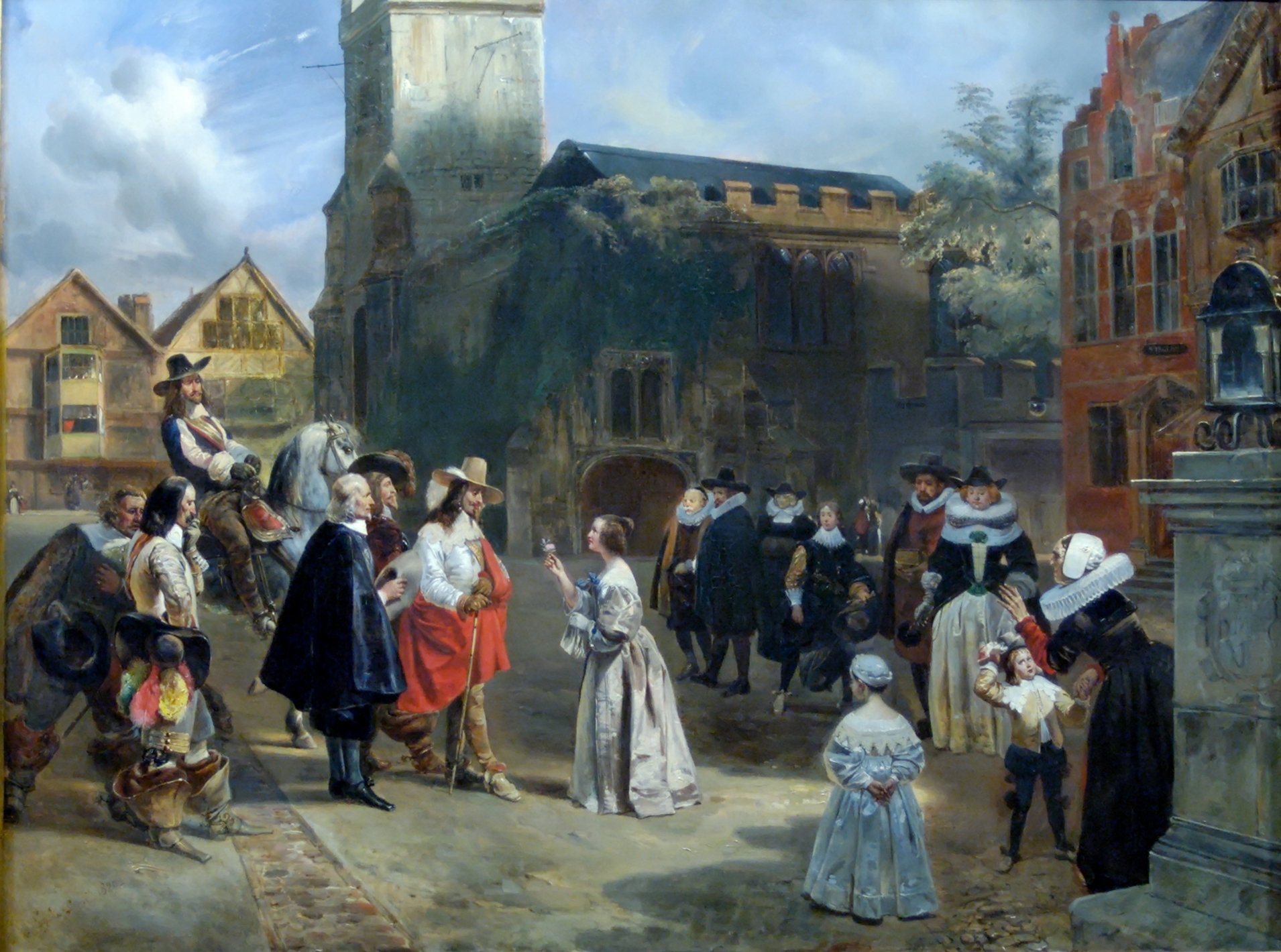|
Madeleine Boullogne
Madeleine BoullogneThe old spelling is Boullongne, sometimes also written Boulogne. (baptised 24 July 1646, Paris - 30 January 1710, Paris) was a French Baroque still life painter. Biography Boullogne was the daughter of Louis Boullogne, a painter and one of the founders of the Académie royale de peinture et de sculpture, and the sister of the painters Bon, Louis and Geneviève Boullogne. On 7 November 1669 she was received into the Académie royale de peinture et de sculpture. She began working in the royal workshops, notably at the Palais des Tuileries, where she painted four canvases for the antechamber to the Grand appartement du roi, but also at the Versailles, where she painted for the antechamber of the Grand appartement de la reine. Madeleine Boullogne lived an austere and pious life, teaching many students, remaining unmarried and living with her brother Bon. Marked by a strict Augustinism bordering on Jansenism, she lived a semi-monastic life. Her presence in the ''Néc ... [...More Info...] [...Related Items...] OR: [Wikipedia] [Google] [Baidu] |
Louise-Magdeleine Horthemels
Louise-Magdeleine Horthemels, or Louise-Madeleine Hortemels, also called Magdeleine Horthemels (1686 – 2 October 1767), was a French engraver, the mother of Charles-Nicolas Cochin. She is also sometimes credited under her married name of Louise Madeleine Cochin or Madeleine Cochin. Life The parish register of the parish of Saint-Benoit, Paris, shows that Louise-Magdeleine, baptized in 1686, was one of at least six children of Daniel Horthemels, a bookseller, and his wife Marie Cellier. The Horthemels family had come from The Netherlands. Originally Protestants, they became followers of the Dutch Roman Catholic theologian Cornelis Jansen and had links with the Parisian abbey of Port-Royal-des-Champs, the centre of Jansenist thought in France.Louise-Magdeleine Horthemels: Reproductive Engraver by Elizabeth Poulson ... [...More Info...] [...Related Items...] OR: [Wikipedia] [Google] [Baidu] |
Painters From Paris
Painting is a visual art, which is characterized by the practice of applying paint, pigment, color or other medium to a solid surface (called "matrix" or " support"). The medium is commonly applied to the base with a brush. Other implements, such as palette knives, sponges, airbrushes, the artist's fingers, or even a dripping technique that uses gravity may be used. One who produces paintings is called a painter. In art, the term "painting" describes both the act and the result of the action (the final work is called "a painting"). The support for paintings includes such surfaces as walls, paper, canvas, wood, glass, lacquer, pottery, leaf, copper and concrete, and the painting may incorporate other materials, in single or multiple form, including sand, clay, paper, cardboard, newspaper, plaster, gold leaf, and even entire objects. Painting is an important form of visual art, bringing in elements such as drawing, Composition (visual arts), composition, gestural painting, gest ... [...More Info...] [...Related Items...] OR: [Wikipedia] [Google] [Baidu] |
French Baroque Painters
French may refer to: * Something of, from, or related to France ** French language, which originated in France ** French people, a nation and ethnic group ** French cuisine, cooking traditions and practices Arts and media * The French (band), a British rock band * "French" (episode), a live-action episode of ''The Super Mario Bros. Super Show!'' * ''Française'' (film), a 2008 film * French Stewart (born 1964), American actor Other uses * French (surname), a surname (including a list of people with the name) * French (tunic), a type of military jacket or tunic * French's, an American brand of mustard condiment * French (catheter scale), a unit of measurement * French Defence, a chess opening * French kiss, a type of kiss See also * France (other) * Franch, a surname * French Revolution (other) * French River (other), several rivers and other places * Frenching (other) * Justice French (other) Justice French may refer to: * C. G. ... [...More Info...] [...Related Items...] OR: [Wikipedia] [Google] [Baidu] |
17th-century French Women Artists
The 17th century lasted from January 1, 1601 (represented by the Roman numerals MDCI), to December 31, 1700 (MDCC). It falls into the early modern period of Europe and in that continent (whose impact on the world was increasing) was characterized by the Baroque cultural movement, the latter part of the Spanish Golden Age, the Dutch Golden Age, the French ''Grand Siècle'' dominated by Louis XIV, the Scientific Revolution, the world's first public company and megacorporation known as the Dutch East India Company, and according to some historians, the General Crisis. From the mid-17th century, European politics were increasingly dominated by the Kingdom of France of Louis XIV, where royal power was solidified domestically in the civil war of the Fronde. The semi-feudal territorial French nobility was weakened and subjugated to the power of an absolute monarchy through the reinvention of the Palace of Versailles from a hunting lodge to a gilded prison, in which a greatly expanded r ... [...More Info...] [...Related Items...] OR: [Wikipedia] [Google] [Baidu] |
18th-century French Painters
The 18th century lasted from 1 January 1701 (represented by the Roman numerals MDCCI) to 31 December 1800 (MDCCC). During the 18th century, elements of Enlightenment thinking culminated in the Atlantic Revolutions. Revolutions began to challenge the legitimacy of monarchical and aristocratic power structures. The Industrial Revolution began mid-century, leading to radical changes in human society and the environment. The European colonization of the Americas and other parts of the world intensified and associated mass migrations of people grew in size as part of the Age of Sail. During the century, slave trading expanded across the shores of the Atlantic Ocean, while declining in Russia and China. Western historians have occasionally defined the 18th century otherwise for the purposes of their work. For example, the "short" 18th century may be defined as 1715–1789, denoting the period of time between the death of Louis XIV of France and the start of the French Revo ... [...More Info...] [...Related Items...] OR: [Wikipedia] [Google] [Baidu] |
17th-century French Painters
The 17th century lasted from January 1, 1601 (represented by the Roman numerals MDCI), to December 31, 1700 (MDCC). It falls into the early modern period of Europe and in that continent (whose impact on the world was increasing) was characterized by the Baroque cultural movement, the latter part of the Spanish Golden Age, the Dutch Golden Age, the French '' Grand Siècle'' dominated by Louis XIV, the Scientific Revolution, the world's first public company and megacorporation known as the Dutch East India Company, and according to some historians, the General Crisis. From the mid-17th century, European politics were increasingly dominated by the Kingdom of France of Louis XIV, where royal power was solidified domestically in the civil war of the Fronde. The semi-feudal territorial French nobility was weakened and subjugated to the power of an absolute monarchy through the reinvention of the Palace of Versailles from a hunting lodge to a gilded prison, in which a greatly expande ... [...More Info...] [...Related Items...] OR: [Wikipedia] [Google] [Baidu] |
1710 Deaths
In the Swedish calendar it was a common year starting on Saturday, one day ahead of the Julian and ten days behind the Gregorian calendar. Events January–March * January 1 – In Prussia, Cölln is merged with Alt-Berlin by Frederick I to form Berlin. * January 4 – Robert Balfour, 5th Lord Balfour of Burleigh, two days before he is due to be executed for murder, escapes from the Edinburgh Tolbooth by exchanging clothes with his sister. * February 17 – Mauritius, a Dutch colony since 1638, is abandoned by the Dutch. * February 28 (Swedish calendar) February 27 (Julian). March 10 (Gregorian) – Battle of Helsingborg: Fourteen thousand Danish invaders, under Jørgen Rantzau, are decisively defeated by an equally large Swedish army, under Magnus Stenbock. * March 1 – The Sacheverell riots start in London with an attack on an elegant Presbyterian meeting-house in Lincoln's Inn Fields, followed by riots through the West End of Lond ... [...More Info...] [...Related Items...] OR: [Wikipedia] [Google] [Baidu] |
1646 Births
It is one of eight years (CE) to contain each Roman numeral once (1000(M)+500(D)+100(C)+(-10(X)+50(L))+5(V)+1(I) = 1646). Events January–March * January 5 – The English House of Commons approves a bill to provide for Ireland to be governed by a single Englishman. * January 9 – Battle of Bovey Heath in Devonshire: Oliver Cromwell's New Model Army surprises and routs the Royalist camp of Lord Wentworth. * January 19 – Sir Richard Grenville, 1st Baronet, a Royalist fighting for Prince Charles against Oliver Cromwell's Commonwealth, is imprisoned for insubordination after proposing to make Cornwall self-governing in order to win Cornish support for the Royalists. After being incarcerated at the tidal island of St Michael's Mount off of the coast of Cornwall, he is allowed to escape in March to avoid capture by Cromwell's troops. * January 20 – Francesco Molin is elected as the 99th Doge of Venice after 23 ballots, and governs the Venetian ... [...More Info...] [...Related Items...] OR: [Wikipedia] [Google] [Baidu] |
Galerie Des Glaces
The Hall of Mirrors () is a grand Baroque style gallery and one of the most emblematic rooms in the royal Palace of Versailles near Paris, France. The grandiose ensemble of the hall and its adjoining salons was intended to illustrate the power of the absolutist monarch Louis XIV. Located on the first floor (''piano nobile'') of the palace's central body, it faces west towards the palace gardens. The Hall of Mirrors has been the scene of events of great historic significance, including the Proclamation of the German Empire and the signing of the Treaty of Versailles. Cultural and historical background Construction In 1623, King Louis XIII ordered the construction of a modest two-story hunting lodge at Versailles, which he soon enlarged to a château from 1631 to 1634. His son Louis XIV declared the site his future permanent residence in 1661 and ordered the transformation into an extensive residence in several stages and on a grandiose scale. The palace was to provide ide ... [...More Info...] [...Related Items...] OR: [Wikipedia] [Google] [Baidu] |
Port-Royal-des-Champs
Port-Royal-des-Champs () was an abbey of Cistercian nuns in Magny-les-Hameaux, in the Vallée de Chevreuse southwest of Paris that launched a number of culturally important institutions. History The abbey was established in 1204, but became famous when its discipline was reformed in 1609 by its abbess, Mother Marie Angelique Arnauld (1591-1661). The Arnauld family became its patrons and the abbey's subsequent history was directed by a number of the members of that family. In 1625 most of the nuns moved to a new Port-Royal in Paris, which subsequently became '' Port-Royal de Paris'' (or, more commonly, ''Port-Royal'') while the older one was known as ''Port-Royal des Champs'' ("Port-Royal of the fields"). At the original site, several schools were founded, which became known as the '' Petites écoles de Port-Royal'' ("Little Schools of Port-Royal"). These schools became famous for the high quality of the education they gave. Playwright Jean Racine was educated at Port-Ro ... [...More Info...] [...Related Items...] OR: [Wikipedia] [Google] [Baidu] |
Baroque
The Baroque ( , , ) is a Western Style (visual arts), style of Baroque architecture, architecture, Baroque music, music, Baroque dance, dance, Baroque painting, painting, Baroque sculpture, sculpture, poetry, and other arts that flourished from the early 17th century until the 1750s. It followed Renaissance art and Mannerism and preceded the Rococo (in the past often referred to as "late Baroque") and Neoclassicism, Neoclassical styles. It was encouraged by the Catholic Church as a means to counter the simplicity and austerity of Protestant architecture, art, and music, though Lutheran art#Baroque period, Lutheran Baroque art developed in parts of Europe as well. The Baroque style used contrast, movement, exuberant detail, deep color, grandeur, and surprise to achieve a sense of awe. The style began at the start of the 17th century in Rome, then spread rapidly to the rest of Italy, France, Spain, and Portugal, then to Austria, southern Germany, Poland and Russia. By the 1730s, i ... [...More Info...] [...Related Items...] OR: [Wikipedia] [Google] [Baidu] |







